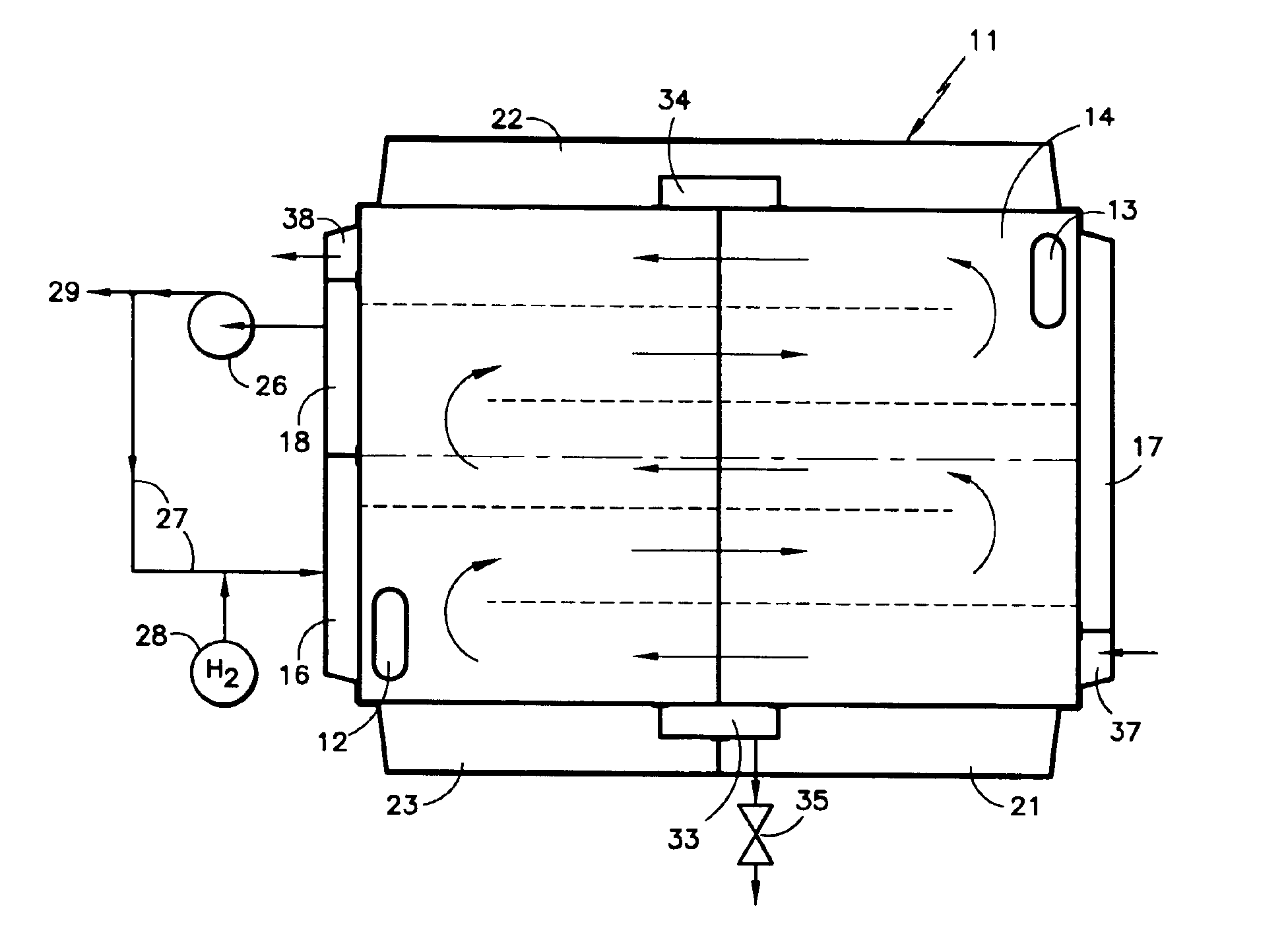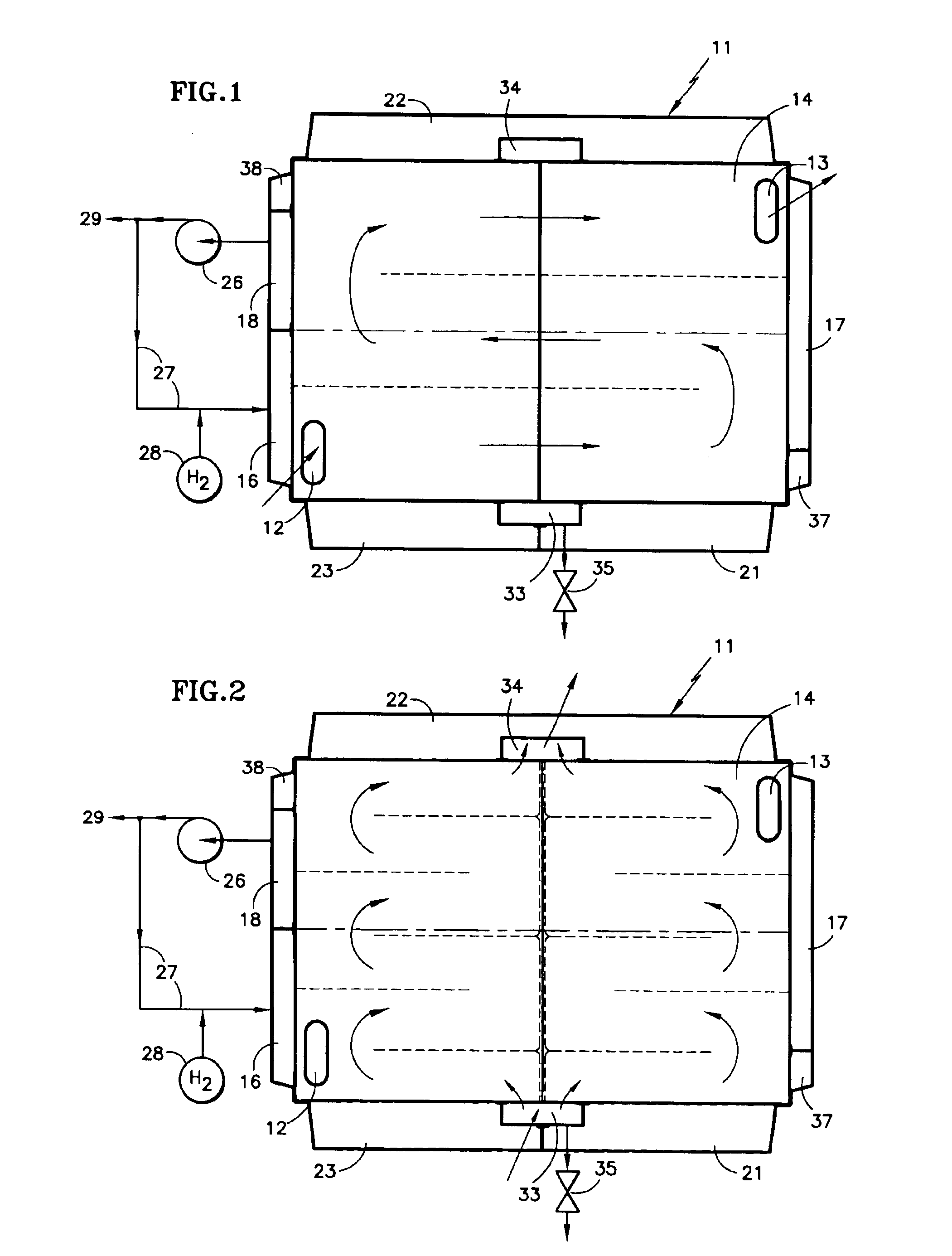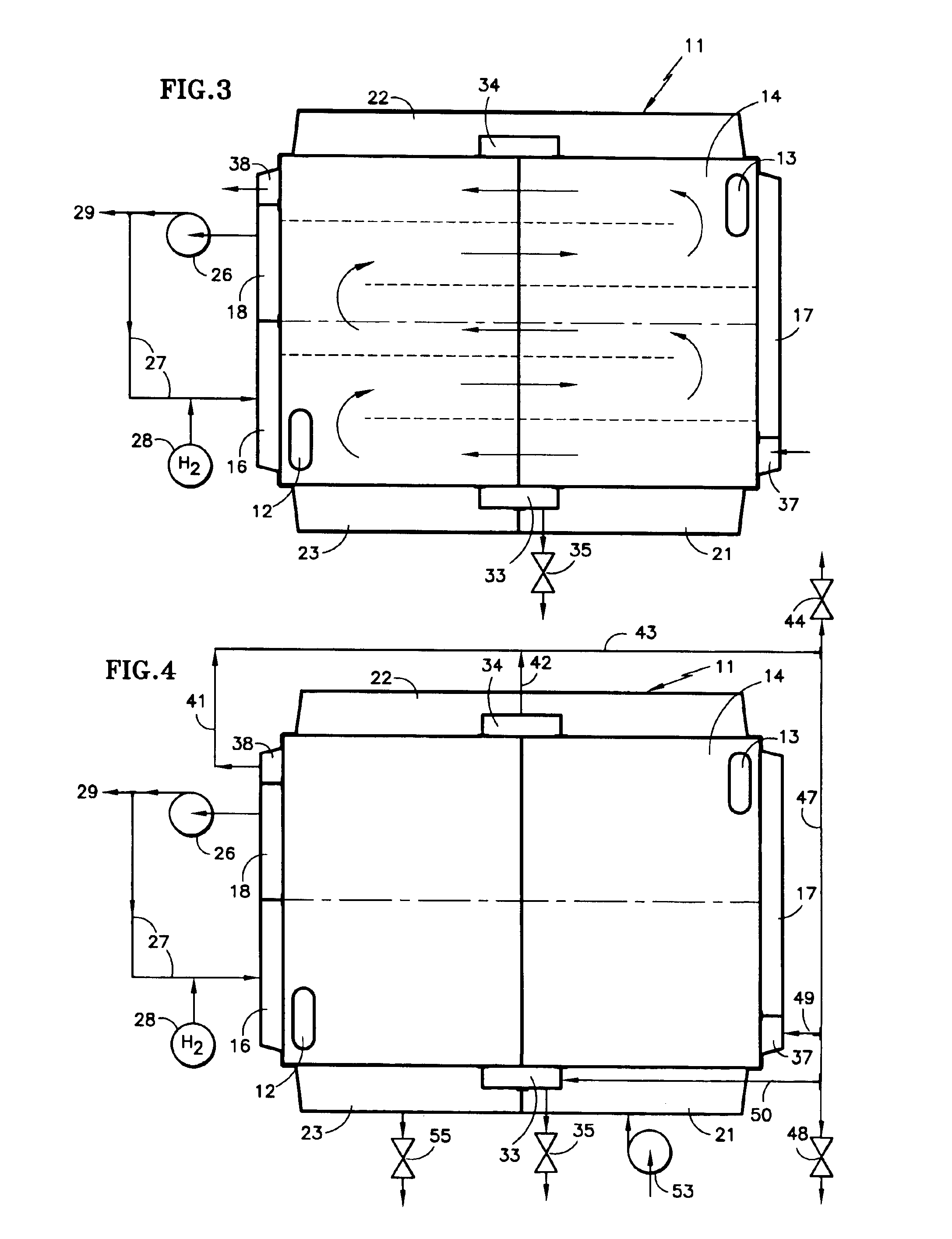PEM fuel cell passive water management
a technology fuel cell, applied in the field of proton exchange membrane (pem) fuel cells, can solve the problems of affecting the affecting the overall efficiency of the fuel cell process, so as to reduce parasitic power, improve the pem fuel cell stack, and improve the efficiency.
- Summary
- Abstract
- Description
- Claims
- Application Information
AI Technical Summary
Benefits of technology
Problems solved by technology
Method used
Image
Examples
Embodiment Construction
[0021]In a fuel cell stack illustrated in FIG. 1, all of the fluids have multi-pass flow fields. Specifically, the fuel cell stack 11 has an internal coolant inlet manifold 12, and an internal coolant exit manifold 13. The coolant therein flows through each fuel cell 14 from the inlet manifold 12 to the right, and then flows through the center of the fuel cell toward the left, whereupon it flows rightwardly toward the coolant exit manifold 13, in generally-S-shaped channels, the direction of flow being demarcated by the arrows and dotted lines in FIG. 1. There may be on the order of 18-24 coolant channels in each of the three coolant flow paths demarcated by the dotted lines of FIG. 1.
[0022]The fuel cell has an inlet manifold 16 for fuel reactant gas, which may be hydrogen or a hydrogen-rich stream obtained by reforming a hydrocarbon. Fuel flow fields in each fuel cell comprise fuel flow channels on one surface of a porous anode plate, which extend between the manifolds 16 and 17 an...
PUM
| Property | Measurement | Unit |
|---|---|---|
| pressure | aaaaa | aaaaa |
| pressure | aaaaa | aaaaa |
| pressure | aaaaa | aaaaa |
Abstract
Description
Claims
Application Information
 Login to View More
Login to View More - R&D
- Intellectual Property
- Life Sciences
- Materials
- Tech Scout
- Unparalleled Data Quality
- Higher Quality Content
- 60% Fewer Hallucinations
Browse by: Latest US Patents, China's latest patents, Technical Efficacy Thesaurus, Application Domain, Technology Topic, Popular Technical Reports.
© 2025 PatSnap. All rights reserved.Legal|Privacy policy|Modern Slavery Act Transparency Statement|Sitemap|About US| Contact US: help@patsnap.com



